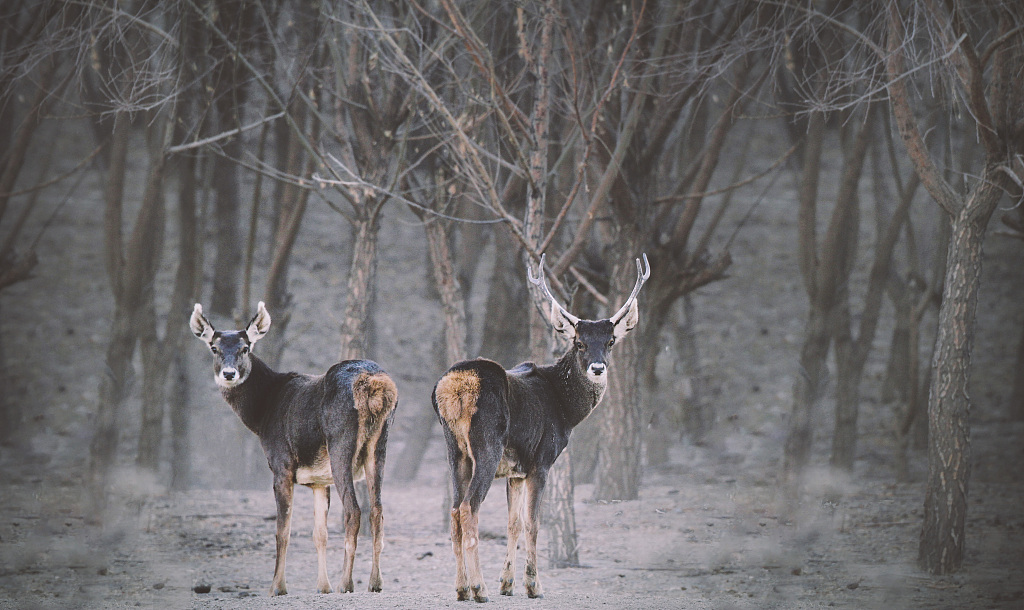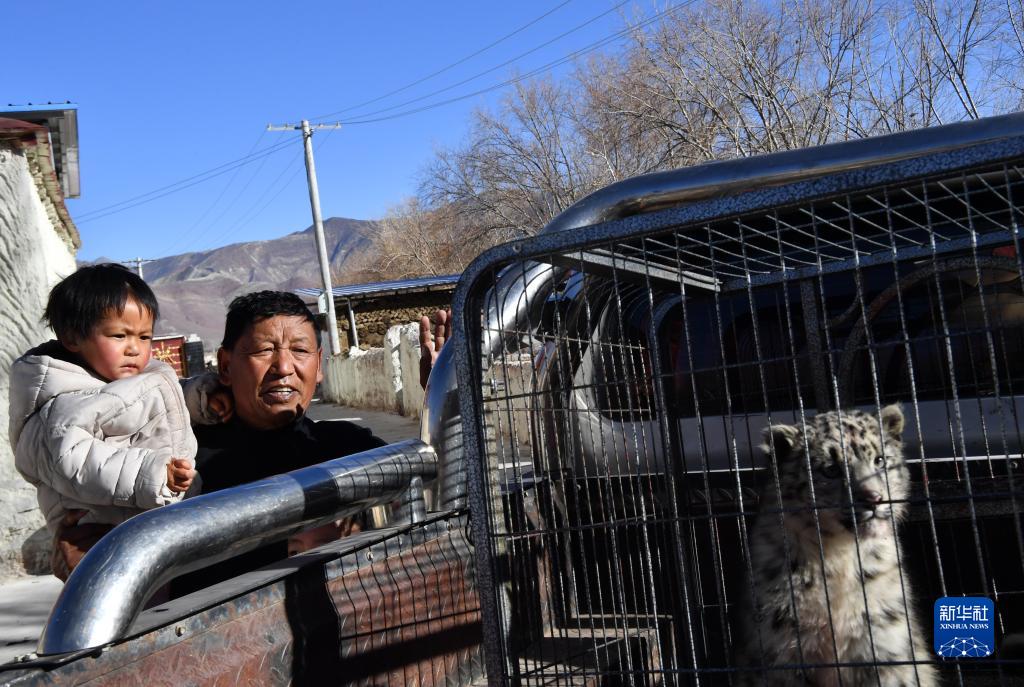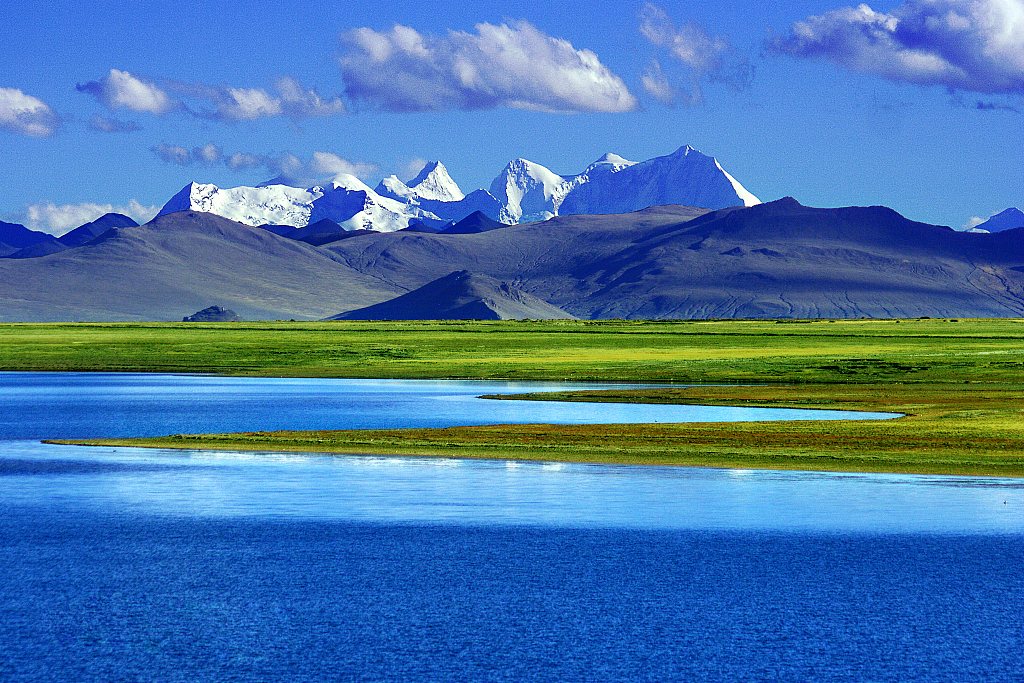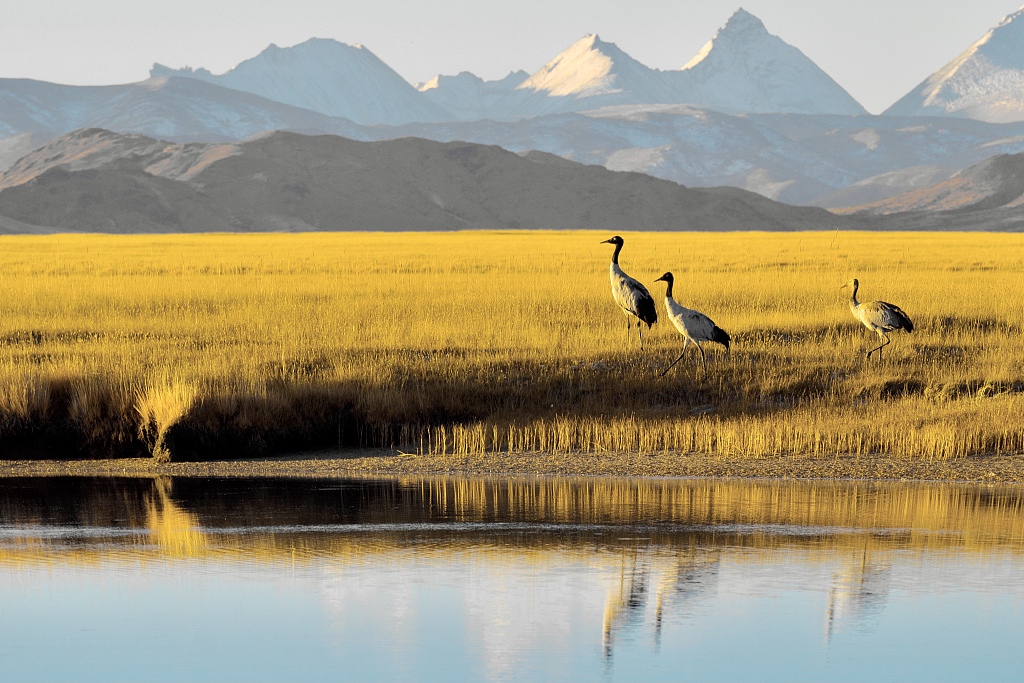"They are just too big. The five of us just could not pull them out", said Thubten Tsering, Party secretary of Jiurong Village in Lhasa City of southwest China's Xizang Autonomous Region, looking at two struggling white-lipped deer trapped in a canal with water up to their necks, while making call after call to the local forestry department as well as his friends in the village for help.
Staff from the forestry department came with ropes. The deer were finally dragged out of water by about a dozen people.
The incident happened last year and it was far from being the first wild animal that Thubten Tsering happened to rescue in his village.

White-lipped deer in Xizang Autonomous Region, southwest China. /CFP
White-lipped deer in Xizang Autonomous Region, southwest China. /CFP
Later that year, local resident and conservationist Tenzin Dargye and his family waved goodbye to their "adoptee" - a snow leopard about six months old. The cub strayed from its mother right after its birth and was discovered by a local herdsman and later sent to Tenzin Dargye's home. After the leopard had gained enough strength, it was finally time to see it off back to the wild.

Tenzin Dargye bidding farewell to snow leopard in Linzhou County, Lhasa City of southwest China's Xizang Autonomous Region on December 4, 2022. /Xinhua
Tenzin Dargye bidding farewell to snow leopard in Linzhou County, Lhasa City of southwest China's Xizang Autonomous Region on December 4, 2022. /Xinhua
For certain parts of Xizang, one of the regions with the richest biodiversity on earth, stories like these have almost become daily occurrences.

A view of Yamdrok Lake in southwest China's Xizang Autonomous Region. /CFP
A view of Yamdrok Lake in southwest China's Xizang Autonomous Region. /CFP
In the three years since the wildlife rescue center in Qushui County of Lhasa was founded in May 2019, over 360 animals were rescued, including about 47 animals under top level state protection.
Numerous creatures of the wild, including species that could only be found here, have left their footprints on the plateau and now Xizang is taking action to make sure they are still able to roam freely on the grassland.
In recent years, the region has invested hundreds of millions of yuan into over 120 projects in the establishment of nature reserves, the restoration of wetlands, wildlife breeding and rescue, etc.
A report on Xizang's ecosystem released in July this year shows that the population of the Tibetan antelope, a signature native species, has increased from about 70,000 in the 20th century, the lowest ever, to over 300,000 now. The number of black-necked cranes, listed under top protection in China, has increased from less than 3,000 in the 20th century to more than 10,000. In addition, other rare and endangered wildlife such as Yunnan golden hair monkeys and Tibetan red deer have also shown remarkable recovery in their population.

Black-necked cranes in southwest China's Xizang Autonomous Region. /CFP
Black-necked cranes in southwest China's Xizang Autonomous Region. /CFP
By the end of last year, Xizang had established a total of 47 nature reserves, protecting more than 412,000 square kilometers, which accounted for more than 34 percent of the region's land area, according to the regional ecology and environment department.
(Cover image via CFP, with input from Xinhua)





